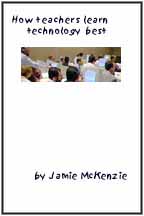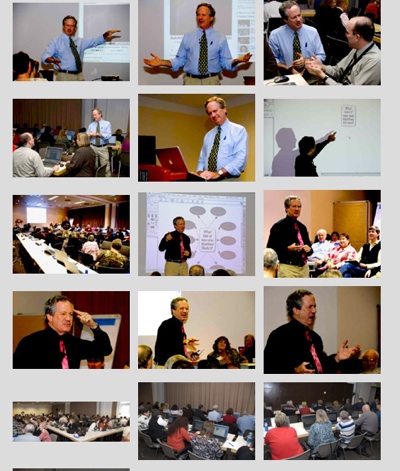




How teachers learn technology best
|
||||
| .Table of Contents | |
| .Part One - A Question of Purpose | |
| Introduction | |
| Chapter One | Lifting the Siege |
| Chapter Two | Learning Digitally |
| Chapter Three | Strategic Teaching |
| Chapter Four | Grazing the Net |
| Chapter Five | The Information Literate School Community |
| .Part Two - A Matter of Strategy | |
| Chapter Six | Secrets of Success |
| Chapter Seven | The Software Trap |
| Chapter Eight | Gauging Return on Investment |
| Chapter Nine | Creating Learning Cultures |
| Chapter Ten | Invention as Learning |
| Chapter Eleven | Online Learning |
| Chapter Twelve | Technology Coaching |
| Chapter Thirteen | Creating a Cadre |
| Chapter Fourteen | Reaching the Reluctants |
| Chapter Fifteen | Planning for Success |
| Chapter Sixteen | Study Groups |
| Chapter Seventeen | Work Place Visits |
| Chapter Eighteen
|
Picking up the Tab
|
IntroductionDuring the final decade of the twentieth century, schools in many countries spent huge sums running cables and buying computers to connect classrooms to the Internet. For this investment to pay dividends - to dramatically strengthen the skills with which students read, write and learn about their world - schools must offset this spending on equipment with two critical elements: 1) a clear focus upon program goals and 2) the provision of extensive professional development opportunities for all teachers. Now that many schools are placing networked computers in all classrooms, we should be asking which strategies are most likely to convert these new technologies into tools that are welcomed and embraced by all classroom teachers. We should be asking how we can maximize the benefits for all of our students. This book is about the search for successful strategies and the answers found during two decades of trying to integrate electronic technologies into classrooms.
We know that more teachers will agree to learn and use new technologies if they can expect to see improved student performance as a result of their efforts. Many teachers are skeptical about the rush to network schools and think of this effort as one more in a long series of bandwagons that have passed across the educational landscape during the past three decades. The second section of the book outlines an approach to the design of adult learning experiences intended to reach a broad spectrum of teachers. During the first two decades of introducing new technologies, we have focused too narrowly upon software and pioneering teachers. We have done much training but devoted little time to adult learning concepts. We have failed to reach the late adopting and reluctant teachers who make up the majority of our faculties. We can do much better. The next decade may bring a dramatic shift as schools and teachers place greater emphasis upon thinking, questioning and information skills, recognizing that networks make possible what the Australians have called “information literate school communities.” With the right program goals and matching professional development opportunities, we can create a generation of young people capable of wrestling thoughtfully and skillfully with difficult questions, problems and decisions. |
|
 Dr. Jamie McKenzie has enjoyed some 40 years working as a teacher, principal, superintendent and director of libraries, media and technology. He draws upon his experience as a leader and an innovator to create this collection of essays and articles outlining an approach to adult learning of new technologies that is intended to reach even the most reluctant teachers.
Dr. Jamie McKenzie has enjoyed some 40 years working as a teacher, principal, superintendent and director of libraries, media and technology. He draws upon his experience as a leader and an innovator to create this collection of essays and articles outlining an approach to adult learning of new technologies that is intended to reach even the most reluctant teachers.


 The first section of the book is devoted to questions of purpose. We have evidence that many teachers are reluctant to use new technologies until we can show them how these tools will help them to deliver on their primary missions (teaching math, reading, science, etc.)
The first section of the book is devoted to questions of purpose. We have evidence that many teachers are reluctant to use new technologies until we can show them how these tools will help them to deliver on their primary missions (teaching math, reading, science, etc.)